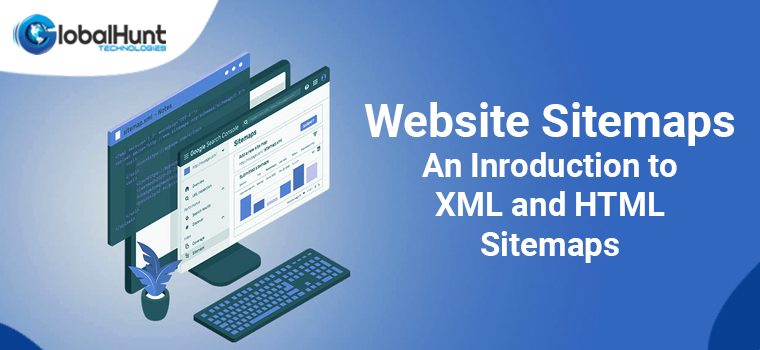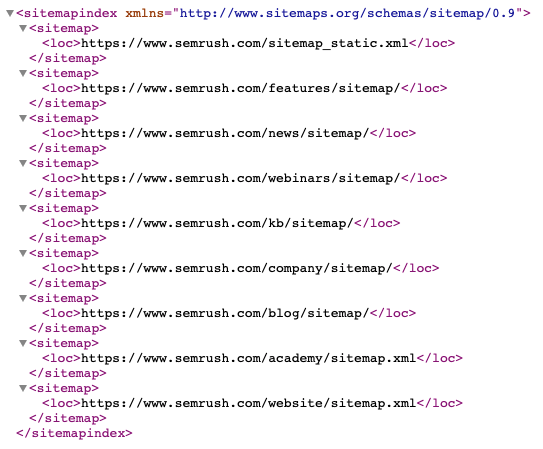
Website Sitemaps are an important element for your business. This helps your business spread as the Google bots and crawlers are coming to check for relevance and other important factors. If you are not attending Sitemaps, you could be missing out on reaching the right followers.
You must index your website to attain the right rank on Google SERP and without a sitemap, it can be difficult. There are more chances for you to grow and reach the higher ranks when you are abiding by the important rules. If you think leaving on the crucial elements won’t affect your branding and promotion, you will discover the truth soon.
If you are wondering what are site maps – they offer relevant information about your page to Google bots and this helps crawlers move through your website easily and efficiently. With a sitemap, you can help crawlers know the important pages of your website.

There are two kinds of Sitemaps, namely:
- HTML – To help users navigate through the website.
- XML – To help Google bots to navigate through the website.
XML Sitemaps
This particular sitemap is built for Google crawlers in specific. They have no job with user experience. There can be pages on your website with no proper links, but with the help of Sitemaps you can speed up the process to fix this problem.
Google bots want to know more about the updated pages. With the help of XML Sitemaps, you give an indication to the bots whenever you refresh the pages with fresh content. Among the availability of data, you can eliminate the old unnecessary information and change it with a new one.
With a single XML sitemap, you can link up to 50,000 URLs and this helps business websites a lot. If you have a website with several pages and there are more than 50, 000 URLs to link, you might need more than one XML file to make up for it. This will speed up the crawling process for Google Bots hence helping your website to perform more efficiently. With larger websites, it gets difficult for the bots to crawl through multiple pages and Google might follow steps to save time underneath which your important pages might be skipped. Hence, it is best to use Sitemaps especially in the case of extensive archives, heavy content, rich media, etc.
Below, we are about to explain about creating your own XML Sitemap, keep reading to learn more.
If any of the page is under development, or not ready to launch, or you are making some changes, hence you don’t want Google bots to crawl it, you can use noindex tag for it and the process to reach the page will stop or become slower. This will meet your requirement when crawlers must skip a content or web page. This is the tag you need when writing a blog and not ready to share with the public.
Discussed below are few common mistakes that can come up with the sitemaps such as:
Namespace error, which occurs when you have a class of elements such as file location etc. Having a unique name. However, the error suggests that you have labeled it wrong. The mistake could be with the spelling, doubling the elements, etc. When you get this error, you must look for the spelling and namespaces.
An empty sitemap occurs in several cases, the foremost being that you uploaded an empty file. It is also possible that the bots can’t find your site for you have used an improper HTML tag.
The wrong format of the file can also be a reason when bots are not able to locate your page. You can fix this issue easily by checking for the file name, extension, or if you have included any content. This will help in getting rid of the empty sitemap error.
HTTP Errors are more serious and they speak for the server issue when the bot is trying to look for it. You must locate the XML file and help Google find it by redirecting it to robots.txt.
It is a must to look for technical glitches to fix the errors permanently.
HTML Sitemaps
Further, we will discuss the HTML Sitemaps.
The key difference between XML and HTML Sitemaps is that the latter is always considered for the purpose of web users. Google will always be able to read XML Sitemaps quicker, but with HTML Sitemaps you are conveying a message that UX is kept in consideration and it helps you reach more users with an improved rank.
Significance of HTML Sitemap
HTML Sitemaps open opportunities for internal linking as well as you can reach more users with a high-view website. Your website will have a logical structure and the bots will crawl more smoothly hence helping your website grow.
You must be wondering as to why Sitemaps are so important and why at all one needs to invest time in them. They help Google bots to crawl your website and look through the internal links, structure, and other elements of your portal finding how the entire website is related. If you have a sitemap, you are helping Google do its work faster and hence you are rewarded with a better rank. Once your rank boosts so does your reach.
Here are three scenarios when Sitemaps can’t be skipped:
The internal linking is missing in your website and it can be worked out with the help of Sitemaps. Google crawls through the website and when you have a sitemap, it runs more smoothly.
With a huge number of pages, it can be difficult to scroll the entire website, but this speeds up the process when we run it smoothly.
When your website is new, it can lack external links and it is difficult to find a website. Google comes closer to your website and understands it better with the help of Sitemaps as it doesn’t have to rely on external links. The traffic will be easily drawn to your page.
Finding Your Sitemap
You can easily find your sitemap via the website’s root directory. It is the best first stop and pointing to it is easier with the help of URL structure <https://YOUR WEBSITE NAME/sitemap.xml>. Your web browser will return the sitemap available for the public domain.
When you are unable to find the file with the given method, you can always check in the CMS. See if the file names are incorrectly saved. It will work for sure and sometimes the Sitemaps are kept in another location. These can be reached when you update the robots.txt file up to a point where Google bots move in the right direction.
Name the file anything as long as it has an XML file extension.
You can follow a step-by-step guide to follow the instructions linked to Sitemaps and deal with the 6 specific issues. It speaks for everything from setting up a tool to adding projects and submitting the sitemap.
The ultimate goal of Sitemaps is to enable Google to index your website. Along with that, Sitemaps also go out to help you and the users. It will be much easier to understand the website content with the help of Sitemaps and you will be able to navigate through the websites better. Ensure the Sitemaps are correctly audited with the help of available tools.
At GlobalHunt Technologies the best digital marketing company, we can help you with the right Sitemap solutions. We have an expert team to help you improve online performance. Contact us today.
- App Store Optimization
- Artificial Intelligence
- CakePHP
- Competitor Analysis
- Content Marketing
- Custom PHP
- Digital Marketing
- eCommerce
- eCommerce SEO
- Email Strategy
- Facebook Marketing
- Google Adword
- Google Algorithm
- Instagram Marketing
- Jobs
- LinkedIn Marketing
- Magento SEO
- Mobile Apps Development
- News
- Online Reputation Management
- Other
- Pay Per Click
- Pintrest
- Search Engine Optimisation
- Social Media Marketing
- Traditional Marketing
- Uncategorized
- Viral Marketing
- Website Design & Development
- Wix SEO
- WordPress
- WordPress SEO

